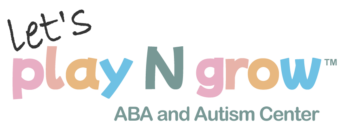How to stop saying “no” all day and start building the behaviors you actually want to see
If you’ve ever felt like all you do is say “Don’t touch that,” “Stop yelling,” or “No running,” you’re in very good company. It’s easy to fall into a routine of correcting behaviors we want to stop, especially on long days when everything feels like a battle.
But when we focus only on what we don’t want, our kids don’t always know what we do want instead.
This is where positive reinforcement becomes a game changer.
What is Positive Reinforcement?
Positive reinforcement is a simple idea with a big impact. It means noticing and encouraging the behaviors we want to see more of. It’s about giving attention to the good stuff so kids are more likely to repeat it.
We’re not talking about bribery or gold star perfection. This is about meeting kids where they are, catching small wins, and helping them build confidence along the way.
The Everyday Magic of Saying What You Do Want
We’ve all been there.
You say “No running,” and your child hears the word running and takes off even faster.
You say “Stop yelling,” and now you’re both yelling.
You say “Don’t touch that,” and they touch it. Twice.
It’s not because they’re trying to ignore you. It’s just that their brains, especially little ones, respond better to what they should be doing, not what to avoid.
Try This Instead
Here are some common phrases parents use, and how you can flip them to focus on the positive:
| Instead of… | Try saying… |
| “No running!” | “Let’s use walking feet inside.” |
| “Stop yelling!” | “Use your calm voice so I can help you.” |
| “Don’t throw!” | “Food stays on the plate.” |
| “Quit hitting!” | “Hands go in your lap. You can ask for help with words.” |
When your child does follow through, even just for a moment, praise it. The more they hear, “That was great listening,” or “I noticed you waited your turn,” the more likely they are to do it again.
What Positive Reinforcement Can Look Like
You don’t need a treasure chest or a sticker chart (though those can help too). Here are some easy, meaningful ways to reinforce positive behavior:
- A high five or thumbs up
- Letting them pick the next song in the car
- A silly thank-you dance
- “I love how you cleaned up. That was so helpful.”
- A little extra screen time or a bonus bedtime story
- Using a funny character voice: “The Laundry Monster says thank you for putting your socks away!”
It’s not about the reward itself. It’s about the connection and encouragement that comes with it.
Real Talk: You Don’t Have to Reinforce Everything
You won’t catch every moment. You’re not a behavior tracking robot. You’re a human. You’re allowed to have off days. Positive reinforcement works best when it feels doable, not overwhelming.
The goal isn’t to praise every tiny thing. It’s to start noticing what’s already going well, name it, and build from there.
Final Thoughts
Positive reinforcement helps kids feel seen for the things they’re doing right. It teaches them that attention doesn’t just come when something’s going wrong, and it helps shift the tone in your home from correction to connection.
So the next time you feel “Stop jumping on the couch” about to come out, try switching it up: “Your feet belong on the floor. Let’s keep the couch safe.”
Then smile. It might not seem like a big moment, but these are the ones that add up.
Helpful Resources for More on Positive Reinforcement:

